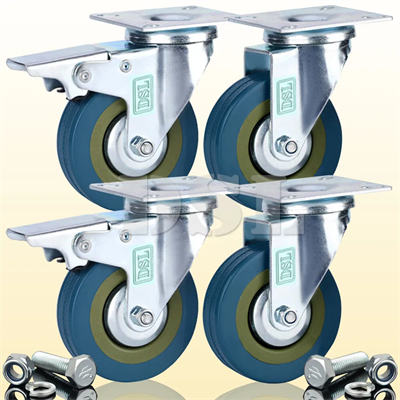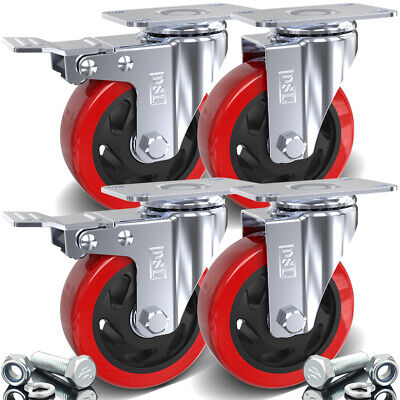Choosing the right rigid caster size is essential to ensure stability, load-bearing capacity, and efficient performance in your specific application. Here are steps to help you select the appropriate rigid caster size:
- Determine the Load Weight: Calculate the maximum load weight that the caster will need to support. Make sure to include the weight of the equipment, products, and any additional forces like shock loads or impact.
- Number of Casters: Decide how many casters you will use on the equipment or object. In most cases, four casters are used, but this can vary. More casters can distribute weight more evenly, while fewer casters can reduce costs.
- Load Distribution: Consider the distribution of the load across the casters. You want the weight to be evenly distributed to prevent overloading a single caster, which can lead to instability.
- Wheel Diameter: The wheel diameter directly affects the caster’s load-bearing capacity and the ease of movement. Larger wheels distribute weight more effectively and provide better mobility over uneven surfaces.
- Caster Type: Depending on the application, you may need to choose between rigid casters and a combination of rigid and swivel casters. This decision affects the caster size, as swivel casters often have smaller wheels.
- Floor Conditions: Consider the condition of the floor or surface where the casters will be used. Rough or uneven surfaces may require larger wheels to provide stability and ease of movement.
- Height Clearance: Ensure that the selected caster size allows for adequate ground clearance, taking into account any obstacles or debris on the floor.
- Aisle Width and Space Constraints: For applications with limited space or narrow aisles, consider the turning radius and overall footprint of the equipment with the casters installed. This ensures maneuverability without causing obstructions.
- Environmental Considerations: Take into account any environmental factors that may affect caster performance, such as temperature extremes, exposure to chemicals, or outdoor use. Some environments may require specialized caster materials.
- Manufacturer’s Recommendations: Consult the manufacturer’s guidelines and specifications for the specific caster model you are considering. They may provide recommendations for caster size based on load capacity and intended use.
- Customization: In some cases, you may need custom caster solutions to meet unique requirements. Manufacturers can provide guidance on selecting or designing the right size for custom applications.
- Testing: If feasible, it can be beneficial to test the chosen caster size and configuration on a prototype or mockup of your equipment to ensure it meets the performance requirements.
When choosing the right rigid caster size, it’s important to strike a balance between load capacity, mobility, and maneuverability. Selecting the appropriate size based on your specific needs will help ensure stable and efficient equipment movement while minimizing the risk of overloading or instability.


